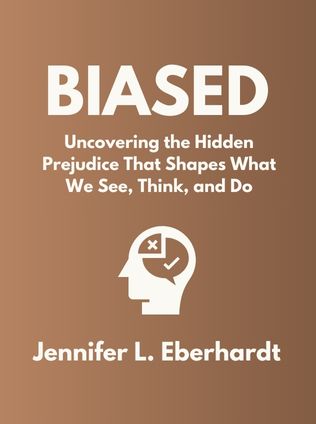
Biased
Uncovering the Hidden Prejudice That Shapes What We See, Think, and Do
By Jennifer L. Eberhardt
Published 03/2019
About the Author
Dr. Jennifer Eberhardt is a renowned social psychologist and a professor at Stanford University, where she has made significant contributions to the study of implicit bias. Her research focuses on how unconscious biases influence our perceptions, actions, and interactions, particularly in the context of race. Eberhardt's work has garnered widespread recognition, including a MacArthur "Genius" Grant, and she has been instrumental in shaping policies and practices aimed at reducing bias in various sectors, especially within the criminal justice system.
Eberhardt's book, "Biased: Uncovering the Hidden Prejudice That Shapes What We See, Think, and Do," draws from her decades of research to explore how implicit biases are formed, how they manifest in everyday life, and what can be done to counteract them. Through a combination of scientific evidence, personal anecdotes, and real-world examples, Eberhardt provides a comprehensive and compelling examination of the pervasive nature of bias and its profound impact on society.
Main Idea
"Biased" delves into the subconscious biases that influence our perceptions, decisions, and actions, often without our awareness. Eberhardt argues that these biases are not just personal but are deeply embedded in the fabric of society, affecting everything from policing and the criminal justice system to education and housing. The book explores how implicit biases are formed, how they manifest in different areas of life, and what can be done to mitigate their harmful effects. Eberhardt's central thesis is that while bias is a natural part of the human brain's functioning, it can have devastating consequences when left unchecked, particularly in a society as diverse as the United States.
Table of Contents
- Introduction: The Nature of Implicit Bias
- Chapter 1: The Formation of Bias in the Brain
- Chapter 2: Racial Bias in the Criminal Justice System
- Chapter 3: Bias in Housing and Neighborhoods
- Chapter 4: Bias in Education
- Chapter 5: Bias in the Workforce
- Chapter 6: From Implicit Bias to Explicit Racism
- Conclusion: Strategies for Reducing Bias
Introduction: The Nature of Implicit Bias
In the introduction, Eberhardt sets the stage by defining implicit bias as the unconscious attitudes and stereotypes that affect our understanding, actions, and decisions. Unlike explicit bias, which is overt and conscious, implicit bias operates subtly and often without our awareness. Eberhardt emphasizes that these biases are not confined to a few prejudiced individuals but are widespread, affecting everyone regardless of their intentions.
"Implicit bias is a universal human condition, embedded in the very way our brains function." - Jennifer Eberhardt
Eberhardt explains that implicit biases arise from the brain's natural tendency to categorize and make quick judgments based on limited information. While these mental shortcuts can be helpful in certain situations, they can also lead to harmful stereotypes and discriminatory behavior, particularly when it comes to race. The introduction highlights the pervasive nature of bias and sets the tone for the rest of the book, which explores how these biases manifest in various aspects of society.
Chapter 1: The Formation of Bias in the Brain
Eberhardt delves into the neurological roots of bias, explaining how the brain’s need to categorize information leads to the formation of stereotypes. One key concept she introduces is the "other-race effect," which refers to the difficulty people often have in distinguishing between faces of a race different from their own. This effect is a form of categorization, a normal brain function that helps us make sense of the world but can also lead to harmful generalizations.
These generalizations are the foundation of bias, particularly racial bias, which can influence everything from who we see as a threat to how we interpret someone’s actions. Eberhardt emphasizes that while categorization is a natural process, it can be hijacked to create and perpetuate stereotypes, which are then reinforced by cultural and social influences.
Sign up for FREE and get access to 1,400+ books summaries.
You May Also Like
The Subtle Art of Not Giving a F*ck
A Counterintuitive Approach to Living a Good Life
By Mark MansonHow To Win Friends and Influence People
The All-Time Classic Manual Of People Skills
By Dale CarnegieFreakonomics
A Rogue Economist Explores the Hidden Side of Everything
By Steven D. Levitt and Stephen J. Dubner



















